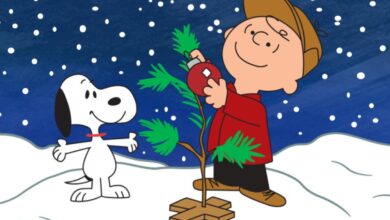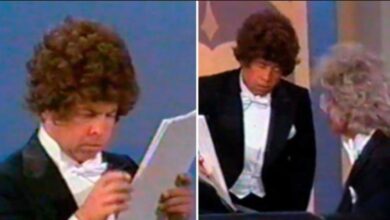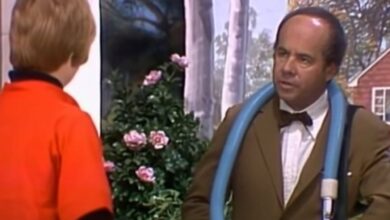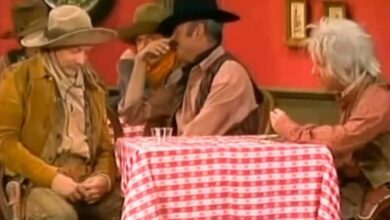Glen Campbell’s “Rhinestone Cowboy” Redefines the Country-Pop Crossover in 1975
When Glen Campbell released “Rhinestone Cowboy” in 1975, few could have predicted how profoundly it would shape both country and pop music. The song quickly rose to the top of the Billboard Hot 100 and Hot Country Singles charts simultaneously—an uncommon feat that made Campbell one of the few artists at the time to achieve such crossover success. With its glittering production and universal themes of perseverance, “Rhinestone Cowboy” became a defining anthem of the decade, elevating Campbell’s career and changing the sound of mainstream country forever.
Campbell had already carved out a name for himself before this release. Born in Arkansas in 1936, he rose from a sharecropper’s son to a member of the famed Wrecking Crew session musicians in Los Angeles. By the late ’60s, he was a household name thanks to hits like “Gentle on My Mind” and his popular TV show, The Glen Campbell Goodtime Hour. But by the mid-1970s, Campbell’s star had begun to dim slightly, and “Rhinestone Cowboy” offered not just another hit—but a resurgence.
Written by Larry Weiss, “Rhinestone Cowboy” was originally recorded by the songwriter himself in 1974. While it didn’t achieve much success initially, the track caught Campbell’s attention during a visit to the radio station KMPC in Los Angeles. The lyrics—about a weary artist still dreaming of stardom—resonated deeply with Campbell, who saw his own struggles and triumphs reflected in the song’s story. He called his producer and insisted they record it immediately.
The recording process was handled with great care. Produced by Dennis Lambert and Brian Potter, the track blended Campbell’s smooth vocals with polished pop arrangements—lush strings, layered harmonies, and a clean, radio-friendly structure. While the song’s structure was rooted in country, the instrumentation leaned heavily on pop influences, allowing it to bridge two very different audiences with remarkable ease.
Upon release, “Rhinestone Cowboy” was an instant hit. It debuted on the country charts in May 1975 and gradually climbed to No. 1 by August. By September, it had also taken the top spot on the Billboard Hot 100, making Campbell one of the first country artists to top both charts simultaneously. The song earned Grammy nominations and ultimately became a signature tune for Campbell, played on every stage from Nashville’s Grand Ole Opry to Las Vegas theaters.
The cultural impact of “Rhinestone Cowboy” was vast. At a time when the lines between country and pop were still sharply drawn, the song blurred those boundaries and opened the door for future genre-blending. It was more than just a catchy tune; it embodied the American ideal of resilience in the face of rejection, and its glitzy metaphor of a cowboy in rhinestones spoke to anyone who had chased a dream against the odds.
For Campbell, the success of “Rhinestone Cowboy” reignited his career. It led to a series of new hits, television appearances, and international tours. Campbell once again became a regular name in both country and pop households. The song’s massive appeal extended beyond borders, making him a star in Europe, Australia, and Asia, proving the global power of a well-crafted, emotionally resonant song.
The track’s influence on the music industry was equally profound. It paved the way for artists like Kenny Rogers, Dolly Parton, and even Shania Twain, who would later find massive success by embracing pop-oriented production while staying grounded in country storytelling. It essentially laid the groundwork for the crossover movement that would dominate country radio decades later.
Over the years, “Rhinestone Cowboy” has been covered by a wide range of artists, including Soul Asylum, Loretta Lynn, and Bruce Springsteen (in concert medleys). Each version brought a different flavor, but none captured the hopeful defiance of the original, with Campbell’s pristine vocals giving it a sincerity that’s difficult to replicate.
The song’s release coincided with a particularly challenging period in Campbell’s life. He was navigating fame, addiction, and personal turmoil. Yet “Rhinestone Cowboy” became a beacon—a reminder of endurance. Its hopeful lyrics and glistening production stood in contrast to the chaos in Campbell’s private life, offering both solace and strength.
In the decades that followed, “Rhinestone Cowboy” remained a staple of American music. It’s been featured in numerous films, television shows, and commercials, from Desperate Housewives to Daddy Day Care, ensuring that new generations continually rediscover its timeless message. It still enjoys regular airplay on classic hits and country radio stations.
The song also left a mark on production standards. Its seamless blend of orchestral pop and country twang became a blueprint for producers aiming to reach a broader audience. For vocalists, it offered a masterclass in restraint and control—how to convey emotion without overselling.
Even after Campbell’s death in 2017, “Rhinestone Cowboy” continued to resonate. During tributes and memorials, the song was played as a celebration of his life and career. It has also appeared in posthumous collections and documentaries, reinforcing its place in the pantheon of American music.
Ultimately, “Rhinestone Cowboy” is more than a song—it’s a symbol. A symbol of endurance, optimism, and the belief that dreams, no matter how battered, are worth chasing. For Glen Campbell, it was the track that brought him back to the top and kept him there, forever stitched into the fabric of country and pop music alike.
Nearly 50 years later, its message still rings true: there’s always room for a dreamer in rhinestones—someone willing to smile through the struggle and keep riding, no matter how rough the road may be.





